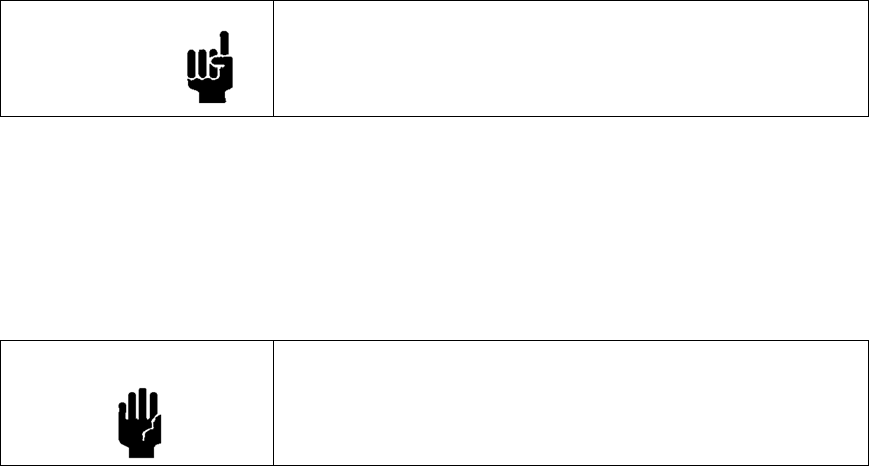
401-405 SERIES - 17 -
3.4.2. Adjusting Zero
The pre-conditions required for a zero check must also be followed when making a zero adjustment.
The zero adjustment is a digitally controlled “reset” type operation. When commanded, the meter
initiates an internal routine that performs the following sequence: measure the current flow reading,
store it in nonvolatile memory as a zero offset, and remove this value from all subsequent readings.
NOTE
If the instrument is inadvertently or improperly zeroed, for
example while flow is passing through the instrument, the flow
reading is subtracted from all future flow readings. This will
produce large flow indication errors.
This offset value can be accessed via the “S40” software query. The reported value is relative to an
internal, un-spanned sensor voltage. As an interpretation guideline, an offset that exceeds 0.15 volts
typically indicates that a faulty zero value is present.
There are three different methods to activate the zero reset function--manually, digitally, and
electrically.
Manually – With the electronics enclosure cover plate removed, a pushbutton switch on the upper
board is pressed.
Digitally – A “ZRO” (“*[address]ZRO” for RS485) command is received properly by the flow meter’s
main processor.
Electrically – An external contact closure generates continuity between pins 8 and 9 of the terminal
strip.
3.4.2.3.5. Over-range
The thermal mass flow sensor heats a portion of the gas in order to measure the flow rate. As the flow
increases the heated tube is cooled and the slope of the sensor output versus the flow rate decreases.
The sensor linearization function corrects for this effect while the flow rate is within the normal
operating region. If the flow exceeds the normal operating region the digital flow indication will
continue to track this increase with a reduced accuracy. The analog flow will also indicate this overflow
condition until the circuitry reaches its limits (approximately 10 -25% over-range).
As the flow continues to increase above the normal operating region the sensor will be cooled
sufficiently that the output of the sensor will reach a peak value around 2 – 4 times the full scale flow
rate. If the flow continues to increase the sensor output will begin decreasing and the digital flow will
indicate a decreasing flow rate even though the flow is actually getting increasing. At approximately 3 –
7 times the full scale flow rate the sensor output will drop within range of the normal output and even
the analog output will record an on-scale flow rate when there is a very large over range flow rate.
CAUTION
Accessing the manual zero pushbutton requires removing the
enclosure front plate. Care must be taken when reinstalling this
plate to ensure that the sealing gasket is properly positioned and
the fasteners are secure to maintain an IP65 compliant seal.
